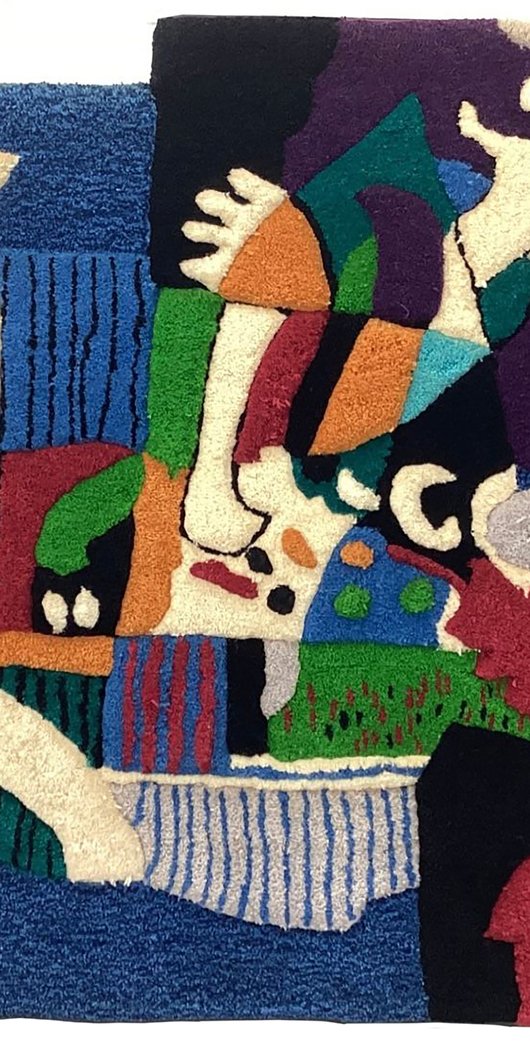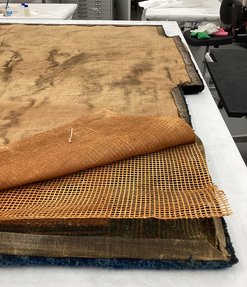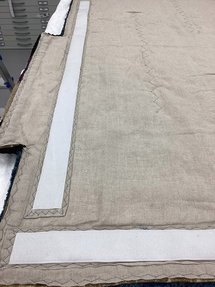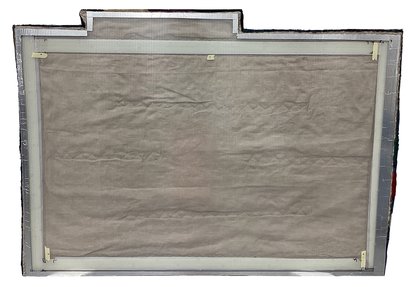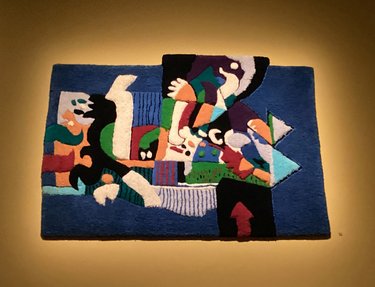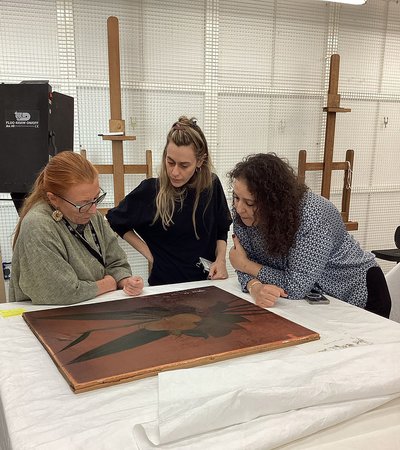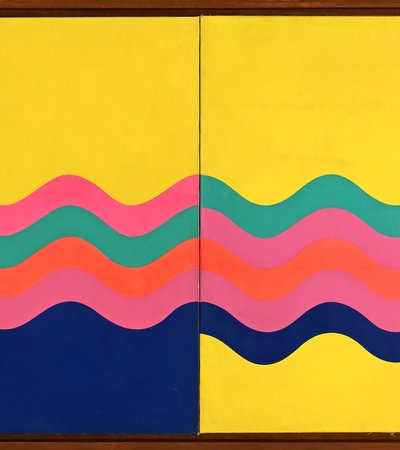Dia al-Azzawi is a celebrated painter and sculptor from Iraq, known for his powerful and imaginative artworks. A pioneer of modern Arab art, Azzawi blends rich cultural history, mythology, and abstract forms. His work includes paintings, sculptures, prints, drawings, and artist books, which he calls dafatir (singular daftar, meaning notebook), reflecting his love of literature and poems. He often draws from ancient Sumerian myths, like the epic of Gilgamesh.
What did the conservation investigation reveal?
As part of an upcoming exhibition at Mathaf, this artwork was brought into the conservation laboratory for a closer look. Over the years, this tapestry had been through a lot. Changes in temperature and humidity, as well as general wear, had caused the wooden board it was mounted on to warp and shrink, no longer providing the support needed. In fact, it started causing some damage to the tapestry. Even worse, the original mount used screws that left holes in the artwork.
When the conservation team carefully removed the tapestry from the board, we discovered that the artist had used a two-layer support system: a plastic net and canvas attached with glue. Unfortunately, over time, the glue had turned yellow and lost its strength, making the tapestry weaker and causing the canvas to stiffen and stain. It was clear that the old support, although original, had to be replaced.
